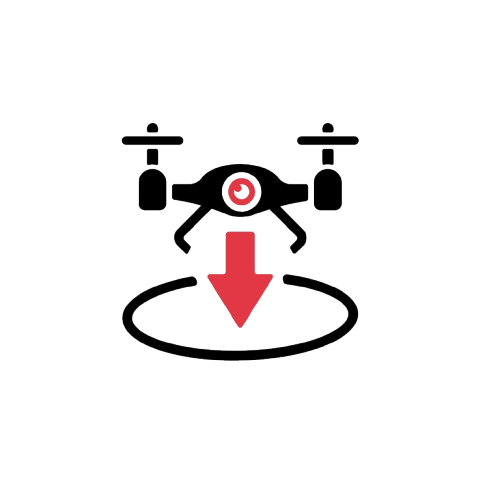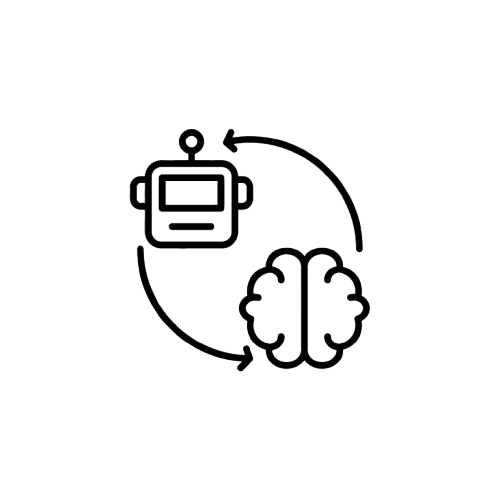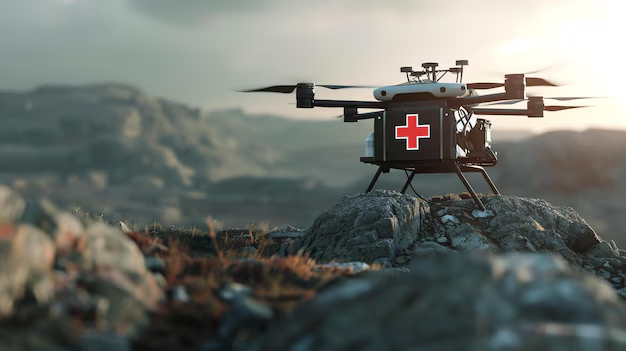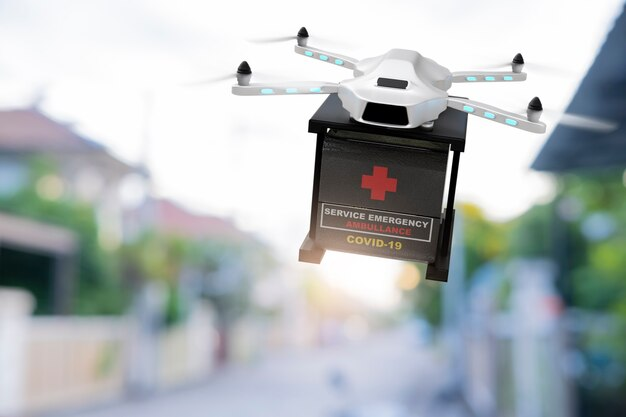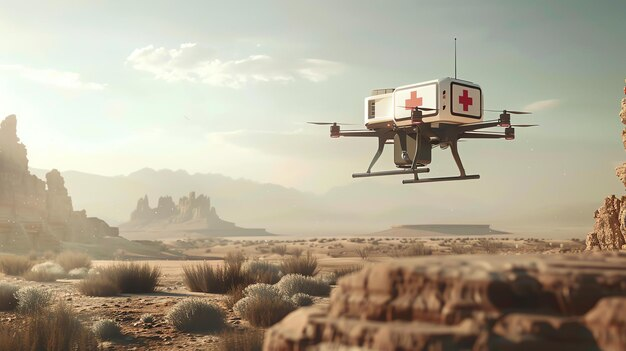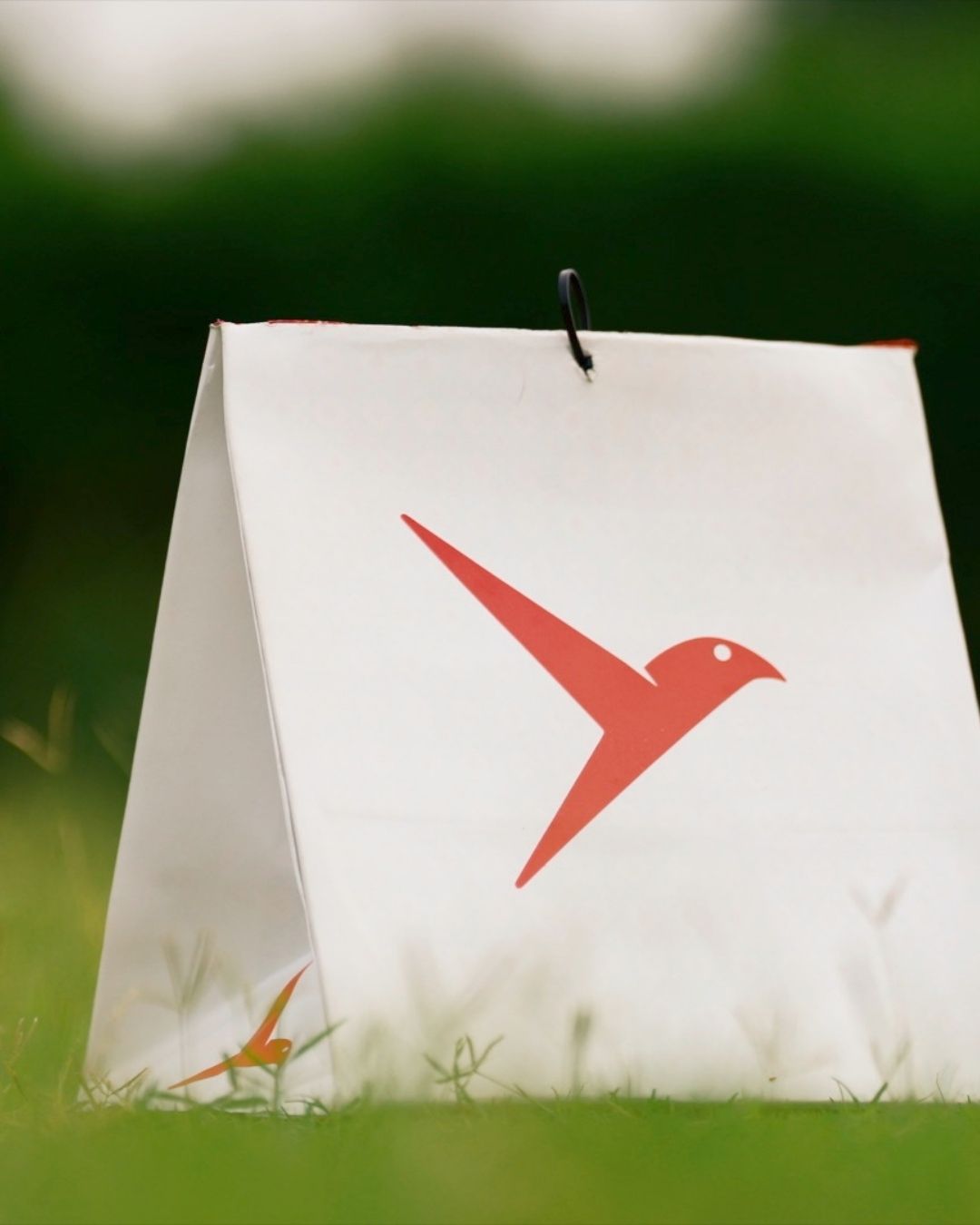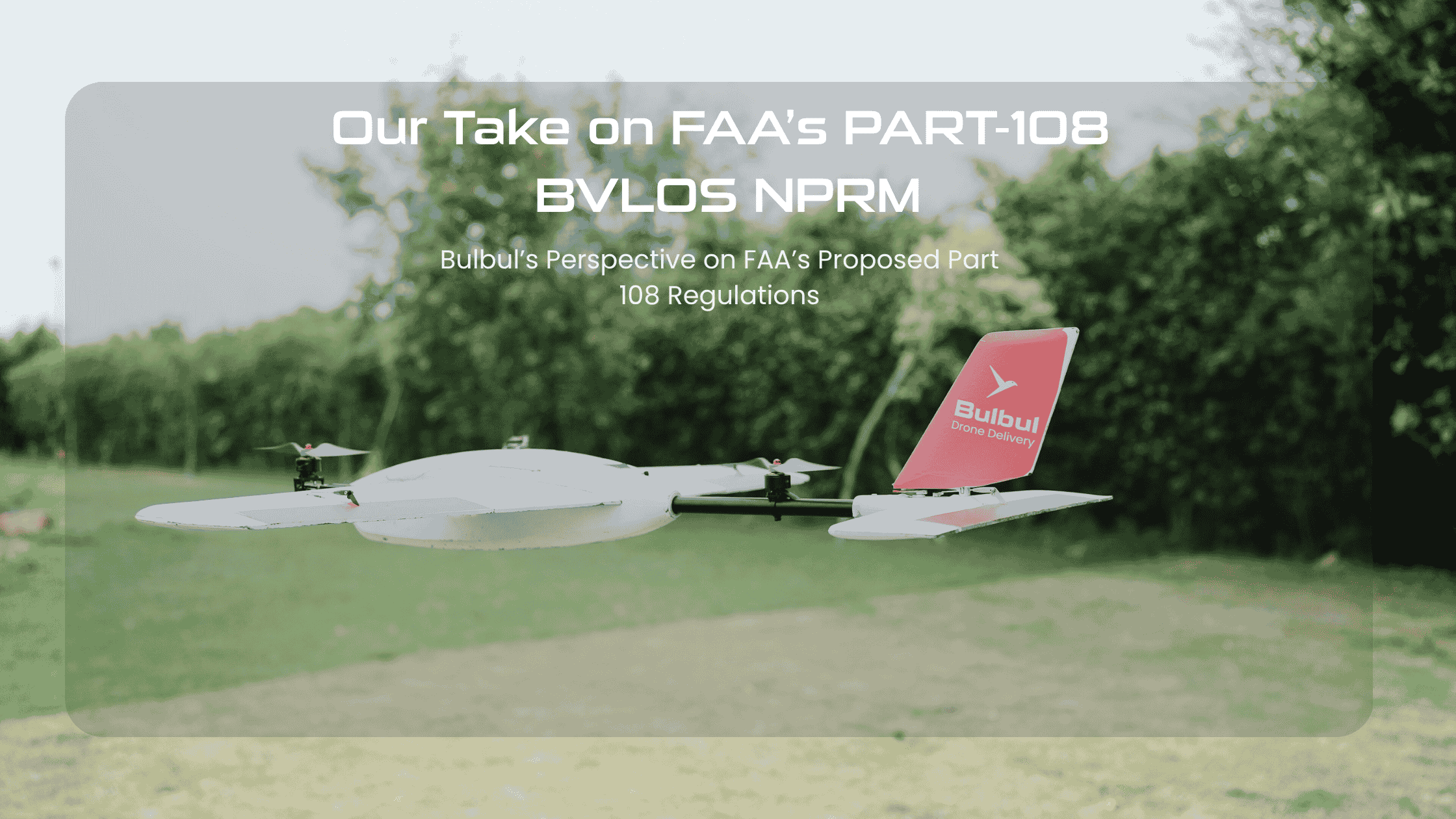Imagine an isolated town utterly cut off following major floods that desperately needs vaccinations. Roads are wrecked, and conventional transportation cannot pass. Drone delivery alters everything here. Now delivering medical supplies faster than ever before, these flying vehicles are saving lives in locations where access and time are vital.
Medical delivery drones are becoming a reality rather than an idea. Companies like Zipline and Bulbul Drone Delivery are shipping medications, vaccines, and blood to difficult-to-reach locations. Advantages of drones include unmatched speed, cost efficiency, and the capacity to fly over obstacles that would stop ground vehicles.
This article will examine how drones for delivery operate in healthcare, their influence, and why they might eventually become the norm for emergency medical logistics.
How Drone Delivery Works in Healthcare?
Medical drone delivery has magic long before it takes off. It begins with knowing just where these flying assistants may most impact things. Healthcare institutions are charting where conventional transportation falls short and where drones might fill important voids. This rigorous preparation guarantees every flight counts and delivers maximum impact where needed. Let’s investigate how professionals decide on the ideal paths and beneficiaries for these aerial medical operations.
Step 1: Identifying Where Drones Are Needed Most
Healthcare professionals decide where supplies are desperately needed before a drone ever flies. Hospitals might need emergency blood transfers, disaster areas with blocked paths, or remote clinics without road access.
Medical delivery drones are already used in Africa by groups such as UNICEF and the Red Cross to reach outlying villages. These drones guarantee that nobody is left behind, even under the most difficult circumstances.
Step 2: Loading Essential Medical Supplies
Medical drones deliver tiny yet vital payloads. These include vaccines (which require temperature control), emergency blood bags, and life-saving drugs like insulin or antimeserials.
Bulbul Drone Delivery uses specialist chambers to maintain medicinal supplies at the correct temperature throughout the flight. This guarantees that blood stays effective until it reaches its target and vaccinations are also effective.
Step 3: Autonomous or Piloted Flight
Most medical drones work in one of two capacities. Some fly automatically to their destination, following pre-programmed GPS paths. Pilots operate others remotely, which is particularly helpful in erratic settings like disaster areas.
Flying straight from point A to point B, drones bypass traffic, uneven ground, and other delays slowing down conventional transportation.
Step 4: Safe and Precise Delivery Methods
Drones are not always landed to deliver goods. In places where landing isn’t safe or reasonable, some drop packets are dropped using a parachute or descended on ropes.
Zipline’s drones bring blood to hospitals in Rwanda in under thirty minutes—a journey that would take hours by car. In an emergency, this quickness makes a life-or-death difference.
Why Medical Delivery Drones Are Changing Healthcare?
The healthcare revolution ascending to the heavens is about solving real-world issues that have dogged medical logistics for decades, not only about fascinating technology. Ground transport cannot solve the basic problems in healthcare delivery that drones are addressing. These flying vehicles are altering the laws of medical supply systems from disaster areas to far-off villages. The advantages include all facets of healthcare accessibility and efficiency beyond mere speed.
Speed That Saves Lives
In a medical emergency, each second counts. Traditional transportation can take hours or even days, particularly in outlying places. Drone delivery greatly reduces that time.
For instance, drones have shortened Ghana’s four-hour vaccination delivery periods to only twenty minutes. That sort of quickness can stop epidemics and save many lives.
Reaching Impossible Locations
Many remote and conflict-torn communities lack dependable highways. Without any infrastructure, drones soar across mountains, rivers, and combat zones, perfect for getting relief where it is most needed.
Lower Costs Than Alternatives
Flying a helicopter is costly. More reasonably priced means of delivering medical supplies from drones help increase healthcare access in underdeveloped areas.
Reducing Risk for Healthcare Workers
Sending medical personnel into hazardous locations can be harmful in war zones or during disease outbreaks. Drones bring supplies without endangering human life.
Real-World Examples of Drone Delivery Success
Seeing an idea put to use in the actual world is proof of its worth. Medical drones have previously survived the test of real field settings and delivered life-saving outcomes when it counted most across Africa and beyond. These recorded triumphs have changed healthcare delivery for thousands of people, not theoretical advantages or lab tests. These examples precisely illustrate what is feasible when drone technology addresses pressing medical needs.
Ghana’s Nationwide Drone Network
Since 2019, Ghana has been using drones to deliver more than one million vaccination shots to far-off clinics. Working with Zipline, they have established several distribution hubs to guarantee that no community is deprived of necessary medical supplies.
Rwanda’s Life-Saving Blood Deliveries
Mostly emergency blood supplies, Zipline’s drones in Rwanda have finished more than 500,000 deliveries. Simply a simple request from hospitals, and a drone shows up within minutes—something unthinkable only a few years ago.
Disaster Response in Malawi
Drones carried medications to restricted areas as cyclones wrecked roadways. In places where conventional aid couldn’t reach rapidly enough, our fast response helped stop disease epidemics.
Challenges and the Future of Medical Drones
Although drone delivery shows great promise, obstacles have to be solved. Many nations have laws prohibiting drone operations, therefore restricting their operating area. Ground drones can only fly in bad weather; current models cannot carry significant medical equipment.
Still, improvements in drone design, artificial intelligence navigation, and battery life are addressing these issues. Bulbul Drone Delivery is developing longer-range drones that could enable even more effective medical delivery.
Conclusion
Drone delivery saves lives already; it is not only a futuristic concept. Medical delivery drones are revolutionising healthcare logistics in ways we never imagined, from accelerating vaccination distribution to providing emergency blood supply.
As technology develops, more governments and hospitals will embrace drones for delivery. In a crisis, drones’ speed, efficiency, and accessibility make them absolutely indispensable.
Want to see how drone delivery could help your healthcare system? Visit Bulbul Drone Delivery to explore the future of medical logistics.






